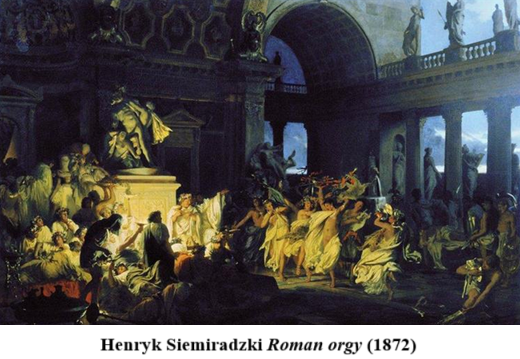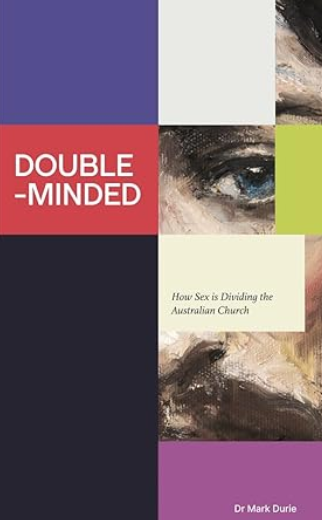
The Demon of Sexual Liberalism

Born at the peak of the Roman empire, Christianity quickly learned the cost of resisting the spirit of the age. Diocletian’s brutal purge of this new, seditious sect followed the Christians’ stubborn refusals to offer a pinch of incense and recognise him as a deity. After a miraculous few decades, a shocking reversal of fortune saw Christianity emerge victorious when Theodosius declared it the established religion of the empire. For centuries thereafter, its radical sexual ethic disrupted and shaped the public consciousness of the West.
The relatively recent sexual revolution, however, has the West re-paganising. What was considered sensible and virtuous treatment of the body has made way for strange ideas; ideas only realised once technology like the contraceptive pill made the cost of risky behaviour a thing of the past.
Mark Durie’s new book, Double Minded, offers a robust primer for our cultural moment. His analysis is two-fold: the increasing pressure on churches to conform to “plausible” secular narratives, and the bad-fruit consequences of their own historical decisions. Galloping through the rudiments of critical theory, postmodernity and novel anthropology, Durie explores these strange ideas and, particularly, their infiltration into the church. Though impacting different churches and traditions in a variety of ways, a century and a  half of higher criticism and liberal theology created vectors of entry into susceptible denominations.
half of higher criticism and liberal theology created vectors of entry into susceptible denominations.
Beyond the realm of ideas, Durie touches on his experience as an advocate for religious freedom. Having been in the trenches for some years, he has seen the alarming growth of matters of justice being handled by quangos rather than judiciaries. Authority is now vested in bureaucrats, with human rights commissars presiding over hearings navigating the labyrinthine and flawed anti-discrimination laws. Complaints are easily triggered and the process is usually the punishment.
The results of the 2021 Census help to make sense of this story. For the first time, less than half of Australia’s population identified as Christian, the rate having fallen almost 10 per cent since 2016. Those without faith (the “nones”) have surged from 30 per cent to 39 per cent. Of those who do identify as Christian, Durie notes the high rates of nominalism, with only 12 per cent of Australians attending church weekly. For Anglicans, the weekly attendance rate is a mere 5 per cent, though few churches do better, with the notable exceptions of Catholicism and Pentecostalism.
The bulk of the book scrutinises the sexual doctrines, codes of conduct and governance of five denominations in the Western tradition. The Eastern Orthodox are absent, simply acknowledged for their uniform conservatism in matters of doctrine and ethics.
The first is Catholicism and its claims to unbroken authority from the Apostle Peter to the present-day Pope. Its long-standing historical teachings were shaped into the 1992 Catechism of the Catholic Church, which included regulations for sexual conduct. Despite the catechism’s clarifying role for members, and a church with a theology of the body without peer, the effects of modernity have still managed to gain traction after decades of post-Vatican II scholarship. This has translated into a marked lay departure from ethical standards, adding to the sizeable host of “cafeteria” Catholics—those who choose to follow only the doctrines that suit them.
Accelerating this further are the divisive factions within the church, with the progressive wing currently occupying the papacy. While this book was completed before Pope Francis created shockwaves with his Fiducia Supplicans, Durie mentions its prelude in Germany, where Catholic bishops voted to approve blessings for same-sex unions in 2023. Rome’s reliability as a united, salutary advocate for the body is becoming precarious, perhaps only one ex cathedra statement away from disaster.
Other historical churches have fared worse. The Anglican Synod in Australia has struggled to find common ground after many dioceses long ago took divergent paths. Since the ordination of gay man Gene Robinson in America’s Episcopal Church in 2003, the global south has organised their own communion to preserve sexual orthodoxy in protest. GAFCON (the Global Anglican Future Conference) has recently begun in earnest, with several Australian churches in liberal dioceses jumping ship to join. Durie succinctly maps the history of these developments, contrasting the bishop-driven proceduralism of the Anglican tradition with other models. Whatever their makeup, he characterises schisms over sexuality as the tip of the iceberg. What lie beneath are hermeneutical judgments and the authority of scripture.
Those remaining in the global Anglican community face compromises that look like desperate attempts to conceal contradictions. The Archbishop of Canterbury is left to fudge his way through zero-sum issues, claiming the church has not changed its position on same-sex marriage while being “extremely joyful” that those in them can now receive God’s blessing.
Drawing attention to the bare facts of demographic shifts, Durie sees any political manoeuvring to be of little long-term impact given the low replacement rate of liberal churches. This has also been the fate of the Uniting Church in Australia, where membership has sharply declined in recent decades.
Formed in 1977 from the Methodists, Congregationalists and liberal Presbyterians, the Uniting Church is known for its progressive theology. Durie traces this to its Basis of Union founding document, which inspired little confidence that it could ever safeguard fidelity to scripture. With its greater focus on the interpreter of the text rather than the text itself, Durie finds all the ingredients of a church whose trajectory was set half a century ago. Unlike the Anglicans, its national assembly is vested with all authority on matters of doctrine. Such a top-down structure can thus override “lower councils”, trickling down to individual congregations. In 2023, eight orthodox ministers from dissenting Uniting Church congregations left the church to become recognised Anglican priests in GAFCON.
Presbyterian churches that didn’t join the 1977 split still cling to their historical doctrines, faithfully observing the 1647 Westminster Catechism of Faith. It is notable that Australian adherence to this founding document is unique among Anglosphere Presbyterians.
Pentecostalism in Australia also shows a strong record of conservative sexual ethics. Its reputation of flashy branding, rock shows and merchants-of-cool pastors overshadows a diverse mixture of Holy Spirit-focused gatherings. The largest denomination is the ACC (Australian Christian Churches), guided by the United Constitution which proscribes specific sexual practices outside of heterosexual marriage. This constitution can change through a strong majority of church delegates, but the conservative base of the ACC has never shown interest in such change. Indeed, according to data reviewed by Durie, the high twenty-something attendance rate of these churches is likely the reason for their conservative attitudes to extramarital sex (97 per cent oppose), compared with baby-boomers (84 per cent oppose) across the board.
Codes of conduct are rigorously enforced in these churches. The public moral failings of high-profile leaders have met with swift dismissals. These include Brian Houston, the pioneer of the world’s most recognisable Pentecostal church, Hillsong, and his New York star pastor Carl Lentz.
Durie mentions the reluctance Pentecostals show towards political engagement. This is a hallmark of many churches in the high-stakes culture wars. Equivocating language is frequently used to soften or avoid unpopular truths, something increasingly futile in what the evangelical cultural commentator Aaron Renn calls “negative world”.
A subject worthy of the book would have been the contemporary concupiscence debate plaguing the Protestant church since the 2018 “Revoice” conference. Conflating eros (erotic love) and philia (friendship love), and neglecting the implications of malakoi (effeminacy; see 1 Corinthians 6:9), its theological perspective constitutes the latest challenge to sexual orthodoxy, namely, an accommodation of tendentious categories from the LGBT+ sub-culture. Seeking to be missional, these developments are the latest touchstone of confused thinking breaching the porous walls of many churches. The heart of the matter is: how should we understand the nature of desire? The way one chooses to answer that question is, evidently, a contributor to the lasting obedience of a church and its members.
It is part of the shared challenge Carl Trueman calls an appeal to “psychological man” in a therapeutic age. Many churches have fallen victim to compromise in the face of pastoral complexities, with the Canadian Anglican theologian Hans Boersma responding, “It is not pastoral to ‘keep nodding’ when someone identifies as gay.” The central importance of the imago dei doctrine is often wielded clumsily, as if it were irreconcilable with sound doctrine.
Perhaps the book’s most valuable information for the uninitiated is on the breadth of theological views in any given church. Most, if not all of them, display the full array of theological conservatism and liberalism, depending on their leadership, faction, diocese, and location. Whether their constituting documents give pride of place to scripture is a strong barometer of orthodoxy. For individual Christians, the difference seems to be regular attendance.
Pressure continues to mount on churches—from outside and from within—to reform their sexual integrity. As ideas about what it means to be human become more flexible, and therapy their chief arbiter, the Western world will be tested as to whether it will choose to honour two millennia of goodness, grounded in the faith once for all entrusted to God’s Holy people (Jude 1:3). This goodness is as immutable as God and his design for sexual expression: boundaries that bring life and peace (Romans 8:6).
Double-Minded: How Sex is Dividing the Australian Church
by Mark Durie
Deror Books, 2023, 155 pages, $24.99
Rohan McHugh is the Media Director for johnanderson.net.au
Madam: Archbishop Fisher (July-August 2024) does not resist the attacks on his church by the political, social or scientific atheists and those who insist on not being told what to do.
Aug 29 2024
6 mins
To claim Aborigines have the world's oldest continuous culture is to misunderstand the meaning of culture, which continuously changes over time and location. For a culture not to change over time would be a reproach and certainly not a cause for celebration, for it would indicate that there had been no capacity to adapt. Clearly this has not been the case
Aug 20 2024
23 mins
A friend and longtime supporter of Quadrant, Clive James sent us a poem in 2010, which we published in our December issue. Like the Taronga Park Aquarium he recalls in its 'mocked-up sandstone cave' it's not to be forgotten
Aug 16 2024
2 mins







